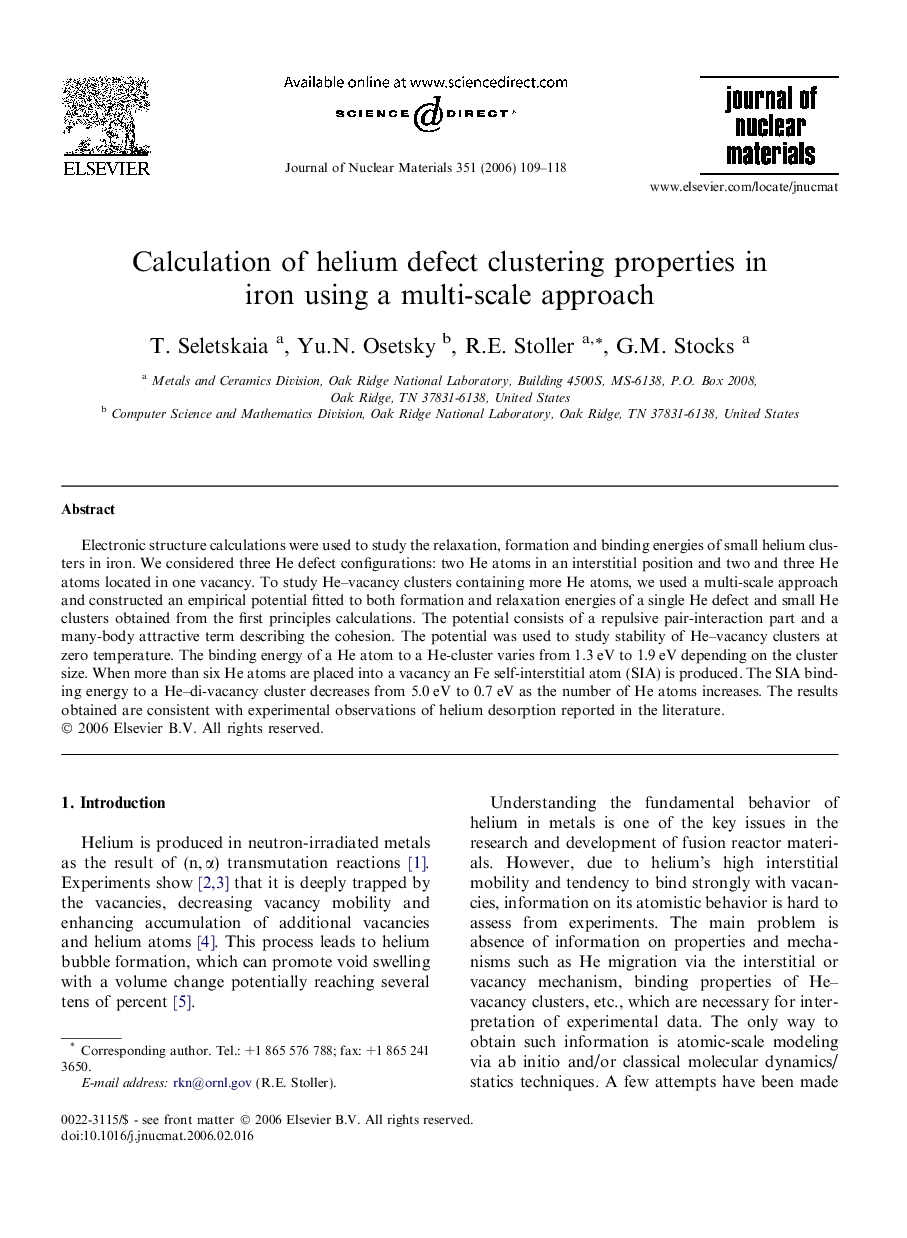| Article ID | Journal | Published Year | Pages | File Type |
|---|---|---|---|---|
| 1569865 | Journal of Nuclear Materials | 2006 | 10 Pages |
Electronic structure calculations were used to study the relaxation, formation and binding energies of small helium clusters in iron. We considered three He defect configurations: two He atoms in an interstitial position and two and three He atoms located in one vacancy. To study He–vacancy clusters containing more He atoms, we used a multi-scale approach and constructed an empirical potential fitted to both formation and relaxation energies of a single He defect and small He clusters obtained from the first principles calculations. The potential consists of a repulsive pair-interaction part and a many-body attractive term describing the cohesion. The potential was used to study stability of He–vacancy clusters at zero temperature. The binding energy of a He atom to a He-cluster varies from 1.3 eV to 1.9 eV depending on the cluster size. When more than six He atoms are placed into a vacancy an Fe self-interstitial atom (SIA) is produced. The SIA binding energy to a He–di-vacancy cluster decreases from 5.0 eV to 0.7 eV as the number of He atoms increases. The results obtained are consistent with experimental observations of helium desorption reported in the literature.
